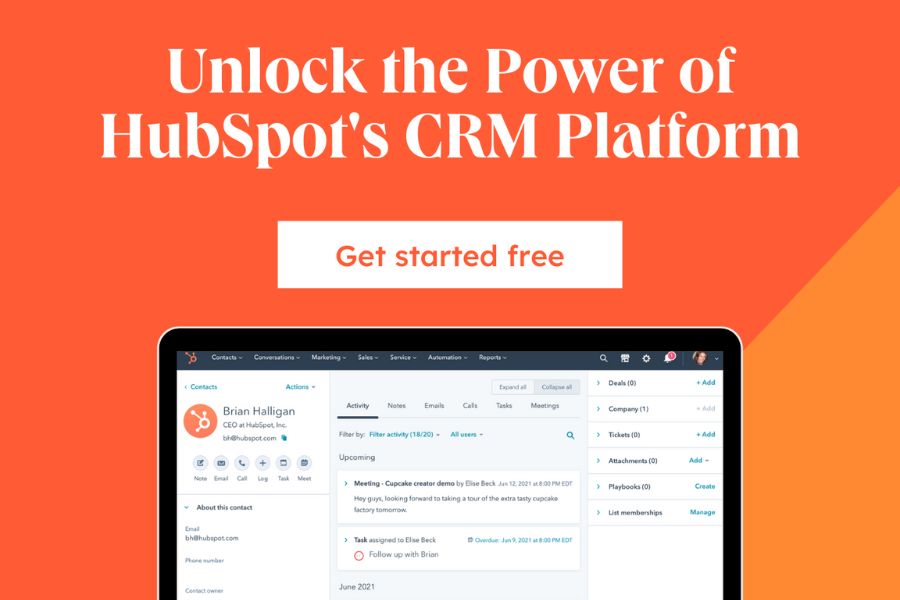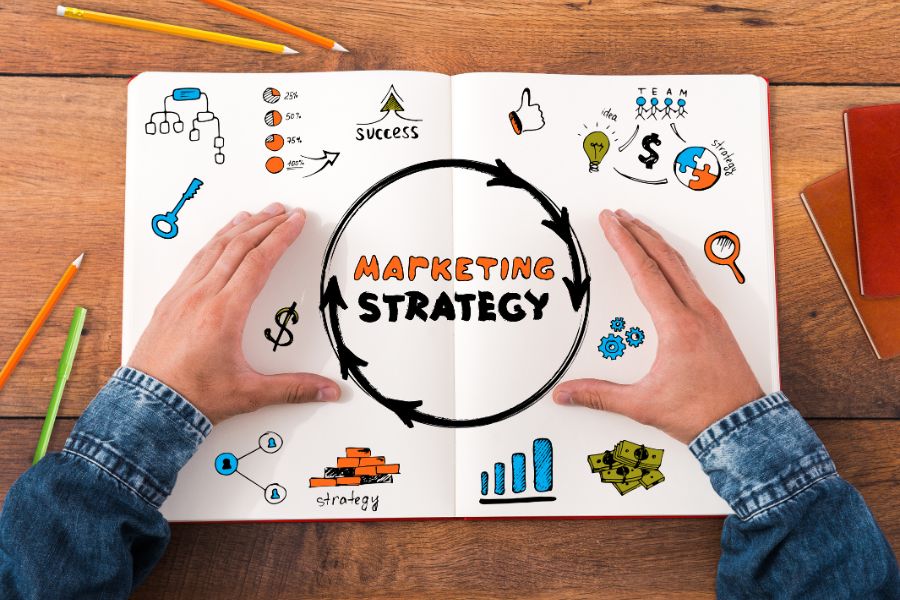The Importance of Evergreen Content for Construction websites

You may have heard the term “evergreen content” but are unsure of what it means and its importance. This article aims to demystify this concept and show you how creating evergreen content can benefit your online presence and long-term success. Let’s dive in! What is Evergreen Content? Evergreen content is content that remains valuable and relevant to the audience for an extended period of time. It is not influenced by current events or trends, making it consistently useful. This type of content usually addresses fundamental questions or provides timeless tips, ensuring its enduring appeal. When creating content, it is important to consider ‘what is evergreen content?’ as it serves as the basis for establishing a consistent and lasting online presence. Why is Evergreen Content Important? Evergreen content has become a buzzword in the digital marketing world, but what exactly is it and why is it so important? In this section, we will dive into the significance of evergreen content and its impact on online presence. We will discuss how evergreen content can generate consistent traffic, improve search engine ranking, and provide long-term value for businesses and websites. So let’s delve into the world of evergreen content and its benefits. 1. Consistent Traffic Understand the target audience and their search behavior. Create valuable, timeless content that answers common queries and drives consistent traffic. Optimize for SEO by incorporating relevant keywords and meta descriptions. Promote on social media and collaborate with industry influencers to increase traffic. Regularly update content to ensure it remains relevant and continues to drive consistent traffic. 2. High Search Engine Ranking Conduct thorough keyword research to identify high search volume and low competition keywords. Create valuable, informative, and engaging content centered around the chosen keywords. Optimize content with relevant headings, meta descriptions, and internal links to improve search engine ranking. Improve website speed and mobile-friendliness to enhance user experience and potentially boost search engine ranking. Regularly update content to keep it fresh and in line with the latest search engine algorithms, which can help maintain a high search engine ranking. Maximizing your website’s visibility on search engines requires strategic keyword research, content optimization, and regular updates to maintain a high search engine ranking. 3. Long-Term Value Investment: Evergreen content provides long-term value, consistently attracting traffic and engagement without expiring. Consistent relevance: It remains pertinent over time, avoiding obsolescence and maintaining its significance. Adaptability: It can be repurposed and updated, ensuring ongoing usefulness and resonance with audiences. What Makes Content Evergreen? In the fast-paced world of online content, there is a special type of content that stands the test of time: evergreen content. But what exactly makes content evergreen? In this section, we will discuss the key elements that contribute to the longevity of evergreen content. From timeless topics that remain relevant year after year, to comprehensive information that continues to be valuable, and strategic use of relevant keywords, we will uncover the secrets behind the enduring nature of evergreen content. 1. Timeless Topics Identify Timeless Topics: Choose subjects unaffected by time, such as ‘fundamental cooking techniques’ or ‘beginner’s guide to investing’. Research Audience Interests: Understand your target audience’s perennial queries and concerns to create relevant evergreen content. Use Evergreen Keywords: Incorporate perennial keywords into your content for sustained relevance and visibility. 2. Comprehensive Information In-depth coverage of a topic, also known as evergreen content, provides comprehensive information that includes thorough insights, analysis, and solutions. This type of content offers detailed explanations, case studies, and practical examples to enhance reader understanding and provide long-lasting value to the reader. 3. Relevant Keywords Understand the audience’s search intent to identify 3. relevant keywords. Utilize keyword research tools to discover popular and trending 3. relevant keywords. Integrate 3. relevant keywords naturally into the content, ensuring it aligns with the topic. Regularly update and refine 3. relevant keywords based on shifting search trends. How to Create Evergreen Content? Evergreen content is a crucial aspect of content creation, as it remains relevant and valuable to readers long after it has been published. In this section, we will discuss the key steps to creating evergreen content that stands the test of time. From researching popular topics to utilizing evergreen keywords and regularly updating your content, we will explore the best practices for creating timeless and valuable content that will continue to attract readers for years to come. 1. Research Popular Topics Utilize keyword research tools like Google Keyword Planner, SEMrush, or Ahrefs to identify popular topics. Stay updated on social media trending topics on platforms such as Twitter, Facebook, and Reddit. Explore industry forums and Q&A sites like Quora and Reddit to discover common queries and discussions. 2. Use Evergreen Keywords Understand the Audience: Analyze the search habits and interests of the target audience. Keyword Research: Utilize tools like Google Keyword Planner to identify popular and relevant evergreen keywords. Integrate Keywords Naturally: Seamlessly incorporate the evergreen keywords into the content to maintain a natural flow. Update Strategically: Periodically refresh the content with new information while keeping the evergreen keywords intact. When using evergreen keywords, make sure they align with the audience’s search intent and remain timeless to sustain the relevance of the content over time. 3. Update Regularly Monitor Content Performance: Regularly check analytics to identify underperforming content and update it accordingly. Update Information: Keep statistics, references, and examples current to ensure accuracy and regularly update them. Refresh Visuals: Replace outdated images or graphics with newer ones to maintain relevance and update them regularly. Examples of Evergreen Content Evergreen content is timeless and continues to be relevant and valuable to readers long after it is published. In this section, we will explore some examples of evergreen content that have stood the test of time. From practical how-to guides and engaging listicles, to informative product reviews and frequently asked questions, we will uncover the various forms that evergreen content can take. Additionally, we will also discuss the importance of including historical information in evergreen content to provide a comprehensive and enduring resource for readers. 1.
What is Google’s EAT and How Does it affect your Website

Are you struggling to improve your website’s search engine ranking? Have you heard of E-A-T and wondered what it is and how it can impact your online presence? In this article, we will explore the concept of E-A-T and its significance for website owners and content creators. Get ready to unlock the secrets of E-A-T and elevate your website’s performance. What is E-A-T? E-A-T stands for Expertise, Authoritativeness, and Trustworthiness. This concept is outlined in Google’s Search Quality Evaluator Guidelines and is crucial for establishing website credibility. Expertise refers to demonstrating knowledge in a specific field, authoritativeness signifies being a leader or well-known figure, and trustworthiness involves maintaining a reliable and secure online environment. A pro-tip for improving search rankings is to regularly update website content and ensure it aligns with E-A-T principles. Why is E-A-T Important for Your Website? As the digital world becomes increasingly saturated with information, it has become crucial for websites to establish trust and credibility with their users. This is where E-A-T comes in – Expertise, Authoritativeness, and Trustworthiness. In this section, we will discuss why E-A-T is important for your website and how it can benefit you in multiple ways. From building trust and credibility to improving search engine ranking and attracting quality traffic, E-A-T plays a vital role in the success of your website. 1. Builds Trust and Credibility Create dependable and precise content to establish trust. Guarantee transparency and reference trustworthy sources for credibility. Demonstrate industry expertise through thoroughly researched and comprehensive articles. Did you know? Establishing trust and credibility is essential for gaining user loyalty and cultivating long-term relationships. 2. Improves Search Engine Ranking Ensure your website’s content is relevant and aligns with search intent. Optimize on-page elements like title tags, meta descriptions, and headers to improve your search engine ranking. Build high-quality backlinks from reputable websites to further boost your ranking. Create valuable, authoritative content that positions you as an industry leader and helps improve your ranking. Regularly update and maintain your website to provide accurate and current information, which can also positively impact your ranking. Pro-tip: Consistently monitor your website’s performance using analytics tools to identify areas for improvement and enhance your search engine ranking. 3. Attracts Quality Traffic Optimize content: Focus on creating relevant and engaging content to attract quality organic traffic. Keyword targeting: Utilize high-value keywords to draw the right audience to your website. Mobile optimization: Make sure your website is mobile-friendly to reach a wider audience. Did you know? Quality traffic leads to higher conversion rates and better user engagement. How Does E-A-T Affect Your Website? You may have heard of E-A-T, an acronym that stands for Expertise, Authoritativeness, and Trustworthiness. But what exactly is E-A-T and how does it affect your website? In this section, we will dive into the three components of E-A-T and discuss how they can impact the credibility and ranking of your website. By understanding the importance of E-A-T, you can make informed decisions on how to improve your website and provide valuable content for your audience. So, let’s begin our exploration of E-A-T and its role in the digital world. 1. Expertise Educational Content: Provide thorough, precise, and all-encompassing information within your field to demonstrate expertise. Authorship: Clearly showcase author credentials and experience on articles to establish expertise. Industry Recognition: Emphasize awards, certifications, or industry affiliations to strengthen your website’s expertise. 2. Authoritativeness Establishing authoritativeness is crucial for building website credibility. This can be achieved by showcasing credentials, certifications, and authoritative endorsements. Additionally, regularly publishing well-researched, accurate, and insightful content can also bolster authoritativeness. Becoming an expert in a specific niche and being recognized as an industry leader can further solidify authoritativeness, ultimately improving the website’s E-A-T. 3. Trustworthiness Ensure Transparency: Provide accurate and verifiable information about your organization, authors, and content creation processes. Consistent Updates: Regularly update and maintain your website to reflect current and accurate information, demonstrating ongoing commitment to trustworthiness. User Privacy Protection: Implement robust security measures to safeguard user data and privacy, thereby building trust and credibility. Clear Communication: Use clear and honest language to communicate your brand’s values, mission, and objectives to establish trust with your audience. In 1906, the Pure Food and Drug Act was passed in the U.S., marking a significant step in ensuring the trustworthiness of food and drug products for consumers. How Can You Improve Your Website’s E-A-T? In the ever-evolving world of search engine optimization, E-A-T has become a crucial factor in determining a website’s ranking. E-A-T stands for Expertise, Authoritativeness, and Trustworthiness, and it refers to the level of expertise and credibility a website holds in its field. But how can you improve your website’s E-A-T? In this section, we will discuss five key strategies to boost your website’s E-A-T, including creating high-quality content, showcasing expertise and authority, building trust with user reviews and testimonials, optimizing for mobile and user experience, and getting backlinks from reliable sources. 1. Create High-Quality Content Research your audience’s needs and interests. Create high-quality content that is original, valuable, and relevant. Ensure accuracy and credibility by citing reliable sources. Regularly update and maintain content quality. Creating high-quality content is essential for engaging and retaining website visitors. 2. Showcase Expertise and Authority Displaying expertise and authority on your website is crucial in establishing credibility and trust with your audience. This can be accomplished by publishing informative articles, case studies, whitepapers, and research papers that demonstrate your extensive knowledge, experience, and achievements in your field. Additionally, featuring interviews with industry experts and displaying certifications and accreditations can further bolster your website’s authority. The construction of the Eiffel Tower, completed in 1889, is a prime example of showcasing expertise and authority. The innovative design and structural integrity of the tower continue to amaze and impress visitors to this day. 3. Build Trust with User Reviews and Testimonials Encourage contented customers to leave comprehensive reviews on your website and other reputable platforms. Display testimonials from clients, showcasing their positive experiences with your products or services. Respond to
How to Boost Engagement on Facebook

Are you struggling to gain traction on your Facebook page? Are your posts not getting the attention they deserve? You’re not alone. With the constant algorithm changes and fierce competition for attention, it can be challenging to increase engagement on Facebook. But don’t worry, we have some effective strategies to boost engagement and grow your audience. Why Is Engagement Important on Facebook? Establishing a strong presence on social media is crucial for any business or brand. Among the various platforms available, Facebook remains a top choice for connecting with a wide audience. However, simply having a presence on Facebook is not enough. To truly make an impact, engagement is key. In this section, we will discuss the importance of engagement on Facebook and how it can benefit your business in three major ways: increasing reach and visibility, building brand loyalty, and driving traffic to your website. 1. Increases Reach and Visibility Tips for expanding your reach and visibility on Facebook: Optimize post timing to ensure maximum audience availability. Utilize relevant hashtags to increase post reach and visibility. Engage in cross-promotion with complementary brands or pages to reach a wider audience. Utilize Facebook advertising tools to target specific demographics and increase visibility. Fact: Posts with images receive 2.3 times more engagement than those without visuals. 2. Builds Brand Loyalty Create compelling brand stories to emotionally connect with your audience and build brand loyalty. Consistently deliver on brand promises to further strengthen trust and credibility with your customers. Engage with customers through personalized interactions and implementing their feedback. Show appreciation for customer loyalty by offering exclusive rewards and offers. Many successful global brands, like Apple and Nike, have successfully built unwavering brand loyalty through consistent messaging and exceptional customer experiences. 3. Drives Traffic to Your Website Create compelling content: Publish engaging posts that prompt users to visit your website for more information and drive traffic to your site. Use captivating visuals: Incorporate eye-catching images and videos in your posts to entice users to explore your website and drive traffic to your site. Include call-to-action (CTA) buttons: Utilize CTA buttons in your posts to direct users to your website for specific actions like ‘Learn More’ or ‘Sign Up’ and drive traffic to your site. How to Measure Engagement on Facebook? As a business or brand on Facebook, it is important to know how your content is resonating with your audience. One way to measure this is through engagement – the likes, comments, shares, and clicks your posts receive. In this section, we will discuss the different metrics that can help you track and analyze your engagement levels on Facebook. From likes, comments, and shares to click-through rates and reach, we will cover the various ways to measure your engagement and make informed decisions for your social media strategy. 1. Likes, Comments, and Shares Likes, comments, and shares are crucial metrics for gauging audience engagement on Facebook. These interactions signify active participation and help amplify your content’s visibility. A high number of likes indicates favorable reception, while comments and shares reflect audience involvement and potential reach expansion. In a similar tone, history shows that social media engagement has been pivotal in shaping online interactions, fostering community connections, and influencing digital trends. 2. Click-Through Rates Optimize Ad Copy: Craft compelling ad copy that entices users to click through to your website. Use Clear Call-to-Actions: Include clear directives in your posts or ads to encourage users to visit your website and improve click-through rates. Monitor Performance: Regularly track click-through rates to gauge the effectiveness of your content and make necessary adjustments. Considering user behavior is crucial, as it directly impacts click-through rates. Aligning content with audience interests can significantly enhance engagement and increase click-through rates. 3. Reach and Impressions Utilize Facebook Insights to track the reach and impressions of your posts. Monitor which content type garners the most reach and impressions. Experiment with different posting times to optimize reach and impressions. Did you know? Reach refers to the number of unique users who see your content, while impressions indicate the total number of times your content is displayed. Strategies to Boost Engagement on Facebook Are you looking to increase your engagement on Facebook? Look no further! In this section, we will discuss effective strategies to boost engagement on the popular social media platform. From posting engaging and relevant content to collaborating with influencers, we will cover seven key tactics that can help you connect and engage with your audience on Facebook. So, let’s dive in and discover how you can effectively boost engagement on this powerful platform. 1. Post Engaging and Relevant Content Understand your audience to tailor content to their interests and needs. Use compelling visuals such as photos, videos, and infographics to grab attention. If you are a trade or service in the construction sector, Before and After images are a MUST as part of your content strategy. Create content that is informative, entertaining, and valuable to your audience. Ensure the content is timely and relevant to current events or trending topics, in order to post engaging and relevant content. 2. Use Visuals to Capture Attention Choose high-quality images or videos that are relevant to your content. Utilize eye-catching graphics to effectively convey your message. Create visually appealing infographics to present information in an engaging way. Pro-tip: Make sure that your visuals are consistent with your brand’s tone and style to maintain a cohesive and professional image. 3. Encourage User-Generated Content Run photo or video contests asking users to submit content related to your brand or products. Create branded hashtags and encourage users to share their experiences using the hashtags. Host Q&A sessions or polls where users can contribute their thoughts and questions or simply answer questions that you know your customers ask ALL the time. Showcase user-generated content on your page to recognize and appreciate your audience’s contributions. 4. Respond to Comments and Messages Respond promptly: Engage with comments and messages in a timely manner to show that you value interaction. Personalize
The Role of Content Marketing in Driving Traffic to Construction Websites?

Are you struggling to attract traffic to your website? You’re not alone. It can be tough to stand out from the crowd and capture the attention of potential customers. That’s where content marketing comes in. By creating and sharing valuable, engaging content, you can drive more traffic to your website and increase your online visibility. With so much competition online, content marketing is essential for businesses looking to grow their online presence. What Is Content Marketing? Content marketing is a strategic approach that involves creating and distributing valuable, relevant, and consistent content to attract and retain a specific audience. The main goal of this approach is to drive profitable customer action. It is a long-term strategy that focuses on building a strong relationship with your audience by providing them with high-quality content that is relevant to their needs and interests. Why Is Content Marketing Important For Website Traffic? In today’s digital landscape, having a strong online presence is essential for any business or organization. And one of the most effective ways to increase your website’s traffic is through content marketing. This section will delve into the importance of content marketing for driving traffic to your website. We will discuss five key benefits of content marketing, including how it can boost brand awareness, improve search engine rankings, generate targeted traffic, build trust and credibility, and encourage social sharing. With these insights, you’ll understand just why content marketing is a vital component of any successful online marketing strategy. 1. Increases Brand Awareness Conduct market research to identify your target audience. Develop content around relevant keywords to enhance visibility. Create engaging content that aligns with your brand’s message and values. Utilize different content formats such as videos, infographics, and blog posts to cater to diverse audience preferences. Share your content across various platforms to maximize brand exposure and increase brand awareness. Pro-tip: Consistently monitor and analyze user engagement metrics to refine and optimize your content strategy for sustained brand awareness growth. 2. Improves Search Engine Rankings Keyword Research: Identify relevant keywords and incorporate them naturally into your content. Quality Content: Produce high-quality, informative, and engaging content that provides value to your audience and improves search engine rankings. Meta Tags Optimization: Optimize meta titles, descriptions, and headers for search engines to understand and index your content better. Internal and External Linking: Link to authoritative sources and interlink content to improve search engine visibility and user experience. Mobile Optimization: Ensure your website and content are mobile-friendly for better search engine rankings. 3. Generates Targeted Traffic Understand Your Audience: Analyze demographics, behavior, and preferences to tailor content and generate targeted traffic. Keyword Optimization: Use relevant keywords to attract specific audience segments and drive targeted traffic. Create Tailored Content: Develop content addressing the pain points and interests of your target audience to attract targeted traffic. Utilize Multiple Channels: Share content on platforms frequented by your targeted demographic to increase targeted traffic. Engage with Audience: Encourage interaction and feedback to refine content, enhance targeting, and generate targeted traffic. 4. Builds Trust and Credibility Establishing trust and credibility through content marketing is crucial for building a loyal audience. This can be achieved through authentic storytelling, consistent messaging, and transparent communication. A great example of this is Patagonia, whose dedication to environmental activism and sustainable practices has garnered trust and credibility from their audience. This is reflected in their loyal customer base and positive brand perception. 5. Encourages Social Sharing Create shareable content: Craft content that is engaging, informative, and visually appealing to encourage social sharing. Integrate social sharing buttons: Make it easy for readers to share your content by including social sharing buttons on your website. Utilize social media platforms: Actively share your content across various social media platforms, encouraging social sharing and reaching a wider audience. How To Create Effective Content For Website Traffic? Creating effective content is crucial for boosting website traffic. In this section, we will discuss the key elements of creating content that will attract and engage your target audience. First, we will explore the importance of identifying your target audience and tailoring your content to their interests and needs. Next, we’ll delve into the role of relevant keywords in optimizing your content for search engines. Then, we’ll share tips on creating high-quality and engaging content that will keep your audience coming back for more. Additionally, we’ll discuss the benefits of utilizing different types of content, such as videos and infographics, to diversify your website and attract a wider audience. Lastly, we’ll touch on the importance of sharing your content on multiple platforms to increase its reach and drive more traffic to your website. 1. Identify Your Target Audience Research and analyze your current customer base to identify common characteristics. Create customer personas based on demographics, behavior patterns, and goals. Utilize analytics and social media insights to understand audience interests and engagement. Conduct surveys and interviews to gather direct feedback from your target audience. Monitor competitors to identify their audience and potential overlap with your target market. By following these steps, you can successfully identify your target audience and create tailored content that will lead to better engagement and results. 2. Use Relevant Keywords Begin by conducting thorough keyword research to identify popular and relevant keywords. Utilize long-tail keywords for more specific targeting. Naturally incorporate keywords into your content to improve its relevance and searchability. Make sure that the keywords are seamlessly integrated into meta descriptions, titles, headings, and image alt text. Consistently update and optimize your keyword strategy based on performance metrics and search engine algorithms. 3. Create High-Quality and Engaging Content Understand the preferences and pain points of your audience to create tailored content that resonates with them. Conduct thorough keyword research to seamlessly incorporate relevant terms into your content. Produce visually appealing and informative content to captivate and retain the interest of your audience. Utilize a variety of formats, such as blogs, videos, infographics, and podcasts, to cater to the diverse preferences of your audience. Distribute your content across multiple platforms
Does Your Construction Business have its Own Hashtag?? #MrsBloggs

Are you struggling to make your brand stand out in the crowded world of social media? One powerful tool that can help is creating a unique hashtag for your brand. In today’s digital age, having a hashtag for your brand is more important than ever. With the rise of influencer marketing and user-generated content, having a strong hashtag can help you increase your reach and engagement with your target audience. Don’t miss out on this opportunity to elevate your brand’s presence online. What Is a Hashtag? A hashtag is a metadata tag used on social networks that starts with the pound or hash symbol. It is a way to categorize content and make it more discoverable. Hashtags allow users to find posts related to a specific topic or theme, such as #ThrowbackThursday or #Foodie. They are also frequently utilized in marketing campaigns to boost brand visibility and engagement. Why Should Your Brand Have Its Own Hashtag? In today’s digital age, having a strong social media presence is crucial for any brand’s success. One effective way to boost your brand’s online presence is by creating a unique hashtag that represents your brand and its values. In this section, we will discuss the key reasons why your brand should have its own hashtag. From increasing brand awareness to improving social media engagement and even aiding in brand monitoring, a branded hashtag can offer numerous benefits for your brand. Let’s dive in and explore these advantages in more detail. 1. Increases Brand Awareness Utilize social media advertising to effectively target specific demographics and regions, increasing brand awareness. Enhance brand visibility by partnering with influencers to reach a wider audience. Showcase a community of supporters by sharing user-generated content featuring the brand hashtag. Amplify brand reach by creating interactive campaigns that encourage participation and sharing. 2. Encourages User-Generated Content Launch interactive campaigns asking users to share their experiences with your product or service using a specific hashtag. Encourage creativity by holding contests for the best user-generated content featuring your brand’s hashtag. Feature user-generated content on your social media platforms to showcase customer experiences and foster a sense of community. Provide incentives such as discounts or exclusive offers for users who actively engage with your brand’s hashtag and contribute to creating user-generated content. 3. Improves Social Media Engagement Post Consistently: Develop a content calendar and post regularly to keep your audience engaged. Engage with Followers: Respond to comments, messages, and mentions to foster a sense of community. Use Interactive Content: Incorporate polls, quizzes, and interactive posts to encourage participation. Collaborate with Influencers: Partner with relevant influencers to expand your reach and engagement. In order to improve social media engagement, it is important to prioritize creating valuable and interactive content that resonates with your audience while also fostering a sense of community. 4. Helps with Brand Monitoring Keeping track of your brand is essential for evaluating customer sentiment and maintaining a positive brand image. By monitoring the usage of your brand’s hashtag, you can gain valuable insights into customer experiences, identify any potential issues, and effectively engage with your audience. For instance, a well-known coffee chain utilized brand monitoring and found a recurring complaint about long wait times. By promptly addressing this concern, they not only improved customer satisfaction, but also demonstrated their dedication to providing quality service. How to Create an Effective Hashtag for Your Brand? In today’s digital age, having a strong and recognizable brand presence on social media is crucial for success. One effective way to do so is by creating a unique hashtag for your brand. But creating an effective hashtag is easier said than done. In this section, we will discuss four key tips on how to craft a powerful and memorable hashtag for your brand that will help boost your social media presence and engagement. From keeping it simple to using a call-to-action, these tips will guide you towards creating a hashtag that truly represents your brand and resonates with your audience. 1. Keep It Short and Simple Remember to keep the hashtag short and simple for easy memorization and usage. The origin of the hashtag dates back to 2007 when Chris Messina, a social technology expert, proposed using the pound symbol to group messages on Twitter into categories. 2. Make It Unique Research Existing Hashtags: Before finalizing your brand hashtag, research existing ones to ensure uniqueness. Check Social Media Platforms: Search across platforms to confirm that the hashtag isn’t already widely in use. Avoid Generic Phrases: Create a hashtag that reflects your brand identity and isn’t a generic or commonly used phrase. Utilize Brand Name or Slogan: Incorporate your brand name or a unique slogan to make the hashtag distinctly yours. When crafting a unique hashtag, consider its memorability and relevance to your brand. Ensure it’s easily identifiable with your brand and resonates with your target audience. Make It Unique 3. Avoid Numbers and Special Characters Avoid using numbers and special characters to ensure easy memorization and searchability. Pro-tip: When creating a brand hashtag, simplicity is key. Keep it straightforward and memorable to maximize its impact and reach. 4. Use a Call-to-Action Clearly state the action: Use verbs like ‘share’, ‘post’, ‘tag’, or ‘create’ to prompt engagement. Make it relevant: Ensure the call-to-action aligns with your brand and the content it accompanies. Keep it simple: Avoid complicated requests to maximize participation. Provide incentive: Encourage participation by offering rewards or recognition. In the early 2000s, the concept of using a call-to-action in marketing gained momentum, with businesses realizing the power of directly asking consumers to take specific actions. This approach revolutionized advertising and became a staple in digital marketing strategies. How to Promote Your Brand Hashtag? A strong and unique hashtag can be a powerful tool for promoting your brand and reaching a wider audience. But simply creating a hashtag is not enough – you need to actively promote and incorporate it into your marketing strategy. In this section, we will discuss four effective ways to promote your brand
What is a Local Citation and How Does it help with SEO?

Are you looking to improve your website’s search engine ranking and online visibility? Then understanding local citations is crucial for your business. In today’s digital age, having a strong online presence is vital for success. In this article, we will unravel the mystery of local citations and explore how it can greatly benefit your SEO efforts. What is a Local Citation? A local citation is any online mention of a local business’s name, address, and phone number. It plays a significant role in local search rankings. Citations from reputable and well-indexed websites can increase the search engines’ confidence in your business’s contact information and category. So, what exactly is a local citation? It is a vital element for businesses looking to enhance their local SEO and increase their online presence. Why are Local Citations Important for SEO? Local citations have become an essential part of SEO strategies in recent years, and for good reason. In this section, we will discuss the importance of local citations for SEO and how they can benefit your business. From improving local search rankings to increasing online visibility and website traffic, local citations offer numerous advantages for businesses looking to boost their online presence. We will also explore how local citations help build trust and credibility among potential customers. 1. Improves Local Search Rankings Improve Google My Business: Make sure your business listing is complete and accurate. Obtain Quality Backlinks: Acquire links from reputable and local websites to enhance authority. Target Local Keywords: Use location-specific keywords throughout your website content. Consistent NAP: Ensure Name, Address, and Phone number are uniform across all platforms. 2. Increases Online Visibility Optimize website content with relevant keywords and location-based phrases to rank higher in local searches and increase online visibility. Enhance online directories by ensuring accurate business information, such as name, address, and phone number, to improve online visibility. Utilize Google My Business to create and manage a comprehensive business profile, enhancing online visibility in Google search results. 3. Boosts Website Traffic Create engaging content: Develop high-quality, relevant content to attract visitors and boost website traffic. Optimize for search engines: Use relevant keywords and meta descriptions to improve search engine visibility and increase website traffic. Promote on social media: Share your website content on various platforms to drive more traffic to your site. Utilize email marketing: Send newsletters or promotions to direct traffic to your website and increase website traffic. 4. Builds Trust and Credibility Consistent Information: Ensure accuracy and consistency in all business listings to establish reliability. Positive Reviews: Encourage and respond to customer reviews on various platforms to build a trustworthy image. Complete Profiles: Provide comprehensive and detailed information about your business to showcase transparency and authenticity. Professional Presentation: Use professional images and content to present your business in a credible and trustworthy manner. What are the Types of Local Citations? Local citations are an essential aspect of local SEO, as they help to establish a business’s online presence and credibility. There are three main types of local citations: structured, unstructured, and NAP citations. Each type serves a different purpose in improving a business’s search engine ranking and visibility. In this section, we will delve into the differences between these citation types and how they can benefit a business’s SEO efforts. 1. Structured Citations Ensure Consistency: Provide accurate and consistent business information across all platforms. Accurate NAP: Ensure the Name, Address, and Phone number (NAP) are identical on all structured citations. Relevant Directories: Submit to high-quality and relevant directories related to your industry or location. Complete Listings: Fill out all details and information fields when creating structured citations. 2. Unstructured Citations Unstructured citations are informal mentions of your business that are found in unstructured formats, such as blog posts, social media posts, or newspaper articles. Some tips for managing unstructured citations include: Monitor unstructured citations on various platforms such as Facebook, Twitter, and local blogs. Ensure that accurate NAP details are consistently used across all unstructured citations. Engage with customers and promptly address any inaccuracies or negative feedback. Encourage satisfied customers to leave positive reviews and mentions on different platforms. 3. NAP Citations Ensure Consistency: Maintain uniformity in the Name, Address, and Phone Number (NAP) across all platforms. Accurate Listings: Verify that your NAP details are correct and up to date in all NAP citations. Local Directories: Submit your business information to relevant local directories to enhance your NAP citations. How to Create Effective Local Citations? Local citations are a crucial aspect of improving a business’s online presence and SEO ranking. But simply having a local citation is not enough; it must be effectively created to reap the benefits. In this section, we will discuss four key steps to creating effective local citations. These include claiming your business listings, maintaining consistent name, address, and phone number (NAP) information, utilizing high-quality directories, and incorporating relevant keywords. Let’s dive into the details of each step and learn how to optimize your local citations for maximum impact. 1. Claim Your Business Listings Ensure the accuracy of your business details on various online platforms. Visit reputable directories such as Google My Business, Yelp, and Bing Places to claim and manage your business listing. Fill out all required fields with precise and consistent information. Incorporate relevant keywords and a captivating business description to improve visibility. 2. Keep NAP Consistent Ensure Consistency: Maintain uniformity in your business Name, Address, and Phone (NAP) details across all online platforms. Update Changes Promptly: Any alterations to NAP information should be promptly updated on all directories and listings. Verify Accuracy: Regularly monitor and verify NAP details to ensure accuracy and consistency. 3. Use High-Quality Directories Verify the reputation and authority of the directory. Ensure the directory is relevant to your industry or niche. Check if the directory is frequently updated and well-maintained. Assess the directory’s domain authority and page ranking. 3. Use High-Quality Directories 4. Include Relevant Keywords When creating local citations, it’s crucial to incorporate relevant keywords that accurately represent your business and its services.
How Long Does it take for your Construction business to Rank in Google

Are you tired of waiting for your website to rank in Google? Do you find yourself constantly checking your search engine ranking but seeing no progress? In today’s fast-paced digital world, every second counts and having a high Google ranking can make all the difference for your business. So, how long does it really take to rank in Google? Let’s delve into this perplexing question and find out the truth. What is Google Ranking? Google ranking is the position that a webpage holds in the search results for a specific query. It is determined by several factors, such as relevance, content quality, and user experience. Websites with higher rankings have a better chance of attracting organic traffic. To improve your Google ranking, it is important to prioritize creating high-quality content, optimizing keywords, improving website speed, and obtaining backlinks from authoritative sources. What Factors Affect Google Ranking? When it comes to ranking on Google, there are several factors that can affect your website’s position on the search engine results page. In this section, we will explore the key elements that impact Google ranking and how they can influence your website’s visibility. We will delve into the importance of high-quality content, the role of backlinks in increasing your website’s authority, the impact of website loading speed on user experience, and the significance of having a mobile-responsive website. Understanding these factors is crucial for improving your website’s ranking and gaining more traffic from Google. 1. Content Quality Originality: Create unique, valuable content that addresses user queries and maintains high content quality. Depth: Provide comprehensive information, going beyond surface-level details and ensuring the quality of the content. Relevance: Ensure the content aligns with search intent, remains up-to-date, and maintains its quality. Engagement: Craft captivating material that encourages user interaction and sharing, while maintaining the quality of the content. 2. Backlinks Research: Identify authoritative websites relevant to your niche. Reach out: Contact webmasters to request backlinks. Create valuable content: Develop resources that others would want to link to. Guest blogging: Contribute articles to reputable sites with backlinks to your own. Monitor and maintain: Keep track of your backlink profile and disavow toxic links. 3. Website Loading Speed Optimize images and videos to reduce file sizes and improve website loading speed. Minimize HTTP requests by combining and compressing files to enhance website loading speed. Enable browser caching for faster loading on repeat visits and improved website loading speed. Utilize a content delivery network (CDN) to distribute content globally and enhance website loading speed. Reduce server response time by optimizing code and server resources for improved website loading speed. 4. Mobile Responsiveness Make sure that your website design is optimized for mobile devices to provide a seamless user experience. Utilize responsive design to adapt to various screen sizes and resolutions. Optimize images and videos for quick loading on mobile devices. Test your website on different mobile devices to ensure smooth functionality. Pro-tip: Prioritize mobile responsiveness to enhance user engagement and improve your Google ranking. How Long Does it Take to Rank in Google? One of the most common questions in the world of SEO is “how long does it take to rank in Google?” The answer is not a simple one, as it depends on various factors. In this section, we will explore the key elements that can influence the ranking time on Google. From the age of the website to the level of competition in the niche, the quality and quantity of content, and the efforts put into SEO, we will discuss how each factor plays a role in the ranking process. 1. Age of the Website Register the domain for an extended period to signal longevity to search engines. Consistently update and refresh website content to demonstrate sustained relevance. Monitor website performance metrics and make improvements over time to maintain competitiveness in the online landscape. A small business launched a website with a long-term vision. By proactively updating content and embracing evolving digital trends, the website steadily gained authority and visibility, ultimately securing top rankings in relevant search results. This success was achieved through the age of the website, as it was consistently updated and improved to stay competitive in the ever-changing online landscape. 2. Competition in the Niche Identify Competitors: Research and identify key competitors in your niche, understanding their strengths and weaknesses. Analyze Their Strategies: Study their content, backlinks, and SEO efforts to gain insights into successful tactics. Refine Your Approach: Differentiate your content and SEO strategies, aiming for unique value propositions. Monitor and Adapt: Continuously monitor competitor activities and adjust your strategies to stay competitive. To improve Google ranking in a competitive niche, thorough competitor analysis and a proactive approach are essential. 3. Quality and Quantity of Content Create comprehensive, valuable content that addresses user queries and provides in-depth information on the quality and quantity of content. Regularly update and refresh existing content to ensure accuracy and relevance for both the quality and quantity of content. Diversify content formats, such as articles, videos, infographics, and podcasts, to cater to different audience preferences and contribute to the quality and quantity of content. Conduct thorough keyword research to identify relevant topics and optimize content for search intent, thus improving the quality and quantity of content. Fact: According to Google, high-quality content is a key factor influencing search rankings, emphasizing the importance of relevance and value to users in terms of the quality and quantity of content. 4. SEO Efforts Keyword Research: Identify target keywords for each page, taking into account search volume and competition. On-Page Optimization: Optimize meta tags, headings, and content with targeted keywords to improve search engine rankings. Quality Content: Create valuable, relevant, and engaging content to attract and retain visitors. Link Building: Obtain high-quality backlinks from reputable websites to increase authority and relevance. Technical SEO: Ensure website structure, speed, and mobile-friendliness meet search engine requirements to optimize SEO efforts. What are Some Tips for Improving Google Ranking? As the world’s most popular search engine, ranking high on Google can greatly
15 Easy Steps to Rank Higher on Google

Are you struggling to get your website to rank higher on Google? You’re not alone. With so many websites competing for top spots, it can be a daunting task to increase your visibility. But fear not, because in this article, we’ll break down 15 easy steps that YOU can take to improve your Google ranking and get more clicks. Let’s dive in! Step 1: Understand Google’s Algorithms What Are Google’s Algorithms? Google’s algorithms are intricate systems designed to retrieve data from its search index and provide the most relevant and authoritative results for a query. These algorithms take into account hundreds of factors, such as keywords, content quality, and user experience, to determine the ranking and visibility of web pages. It is essential to understand the function of Google’s algorithms in order to effectively optimize website ranking and visibility. How Do They Determine Website Rankings? Relevance: Google’s algorithms assess how relevant a webpage is to a user’s search query. Quality: The algorithms evaluate the quality of content, favoring informative, comprehensive, and well-structured pages. User Experience: Website usability and user engagement play a significant role in determining rankings. Authority: Google’s algorithms consider the credibility and trustworthiness of a website, including backlinks and expertise. Performance: Factors like page loading speed and mobile-friendliness impact website rankings. How to Find the Right Keywords for Your Website? Understand Your Audience: Identify the needs and preferences of your target audience. Brainstorm Relevant Topics: Create a list of topics related to your business or industry. Use Keyword Research Tools: Take advantage of tools like Google Keyword Planner, SEMrush, or Ahrefs to discover relevant keywords. Analyze Competitor Keywords: Study your competitors’ websites to find effective keywords. Consider Long-Tail Keywords: Incorporate specific phrases that your audience may use in search queries. Evaluate Keyword Performance: Evaluate the search volume, competition, and relevance of potential keywords. Step 3: Optimize Your Website for Keywords Research relevant keywords for your website’s content. Strategically place keywords in meta tags, URLs, and headings. Create high-quality content that is rich in keywords. Utilize variations of keywords to cover a wide range of search terms. Consistently update and refresh keywords to align with current trends and user intent. How to Incorporate Keywords into Your Website? Understand how to incorporate keywords into your website: Position keywords strategically in the title, meta description, headings, and throughout the content. Use long-tail keywords: Incorporate specific and relevant long-tail keywords to effectively target niche audiences. Avoid overstuffing: Ensure natural and seamless integration of keywords without compromising the readability of your content. What Are Meta Tags and How to Use Them? Meta tags are important snippets of text that provide crucial information about a page’s content. While they do not appear on the page itself, they play a crucial role in helping web crawlers understand the page. To make the most of meta tags, it is important to create unique and accurate descriptions for each page, including relevant keywords to improve visibility. Utilize meta title tags to concisely and compellingly convey the page’s topic, and also make use of meta description tags to provide a brief overview of the content. Remember to keep meta tags concise and relevant in order to enhance search engine visibility. Step 4: Create High-Quality Content Tailor the content to match the audience’s needs and preferences. Incorporate relevant keywords into the content in a natural and organic manner. Produce original and informative content that provides value to the reader. Ensure the content is well-organized, easy to read, and free of grammatical errors. Utilize multimedia elements, such as images, videos, and infographics, to enhance the overall appeal of the content. Why Is Content Important for Google Ranking? Content plays a crucial role in determining the relevance and value of a website, making it essential for achieving a high Google ranking. Engaging and informative content not only improves user experience but also encourages backlinks, signalling authority to search engines. Additionally, high-quality content aids in keyword optimization, leading to better search visibility and higher rankings. To improve your Google ranking, it is essential to focus on creating original and valuable content that addresses user queries and offers solutions. How to Create High-Quality Content? Understand the audience’s needs and preferences to tailor content that is of high-quality. Research extensively to ensure accuracy and depth of information in your content creation process. Create engaging and original content to captivate and maintain the attention of your audience. Optimize your content with relevant keywords to improve search engine visibility and reach a wider audience. Utilize multimedia elements such as images, videos, and infographics to enhance the quality and appeal of your content. Step 5: Use Internal and External Links Internal Links: Enhance user experience and spread link equity by using relevant anchor text to link to other pages within your website. External Links: Improve your site’s credibility and provide additional value to your audience by connecting to authoritative external sites. What Are Internal and External Links? Internal and external links are crucial for website optimization. Internal links direct users to other pages on your site, improving navigation and spreading link equity. External links connect your website to other authoritative sites, enhancing credibility and relevance. Both types of links contribute to better user experience and search engine rankings. Internal links can also help search engines discover new pages on your website, contributing to better indexation and visibility. How to Use Them to Improve Google Ranking? Internal Links: Use these strategies to guide users to relevant content within your website and improve navigation. External Links: Connect with authoritative websites to establish credibility and enhance user experience. Anchor Text Optimization: Make use of descriptive anchor text to provide context for both users and search engines. Link Building: Create valuable content to attract organic backlinks from reputable sources. Step 6: Optimize Your Website’s Loading Speed Minimize HTTP requests by combining files, reducing scripts, and utilizing CSS sprites. Enable browser caching to store data, reducing load times for returning visitors. Optimize images by using appropriate formats, compressing
Has AI Killed SEO? Discover the changes to Google and Bing.

Is the era of traditional Search Engine Optimisation (SEO) coming to an end? Let’s take a look at the current state of SEO now that AI (Artificial Intelligence) has come into play. How is AI impacting Search Results? AI is transforming search results by directly providing answers to queries right there in the search results. This reduces the need for users to click through to one or more websites to get an answer to their question. This dilutes the impact of optimised meta-descriptions and SEO optimised titles on your website pages. The search engines will bypass all of that and simply show one or more answers to the users question. This enhances efficiency and user experience, making information access quicker and more intuitive. The biggest fear for SEO and Paid Ads Potentially, AI results will encourage users to bypass paid ads and costly efforts by websites to improve their organic SEO ranking. This threatens entire industries of Google ad professionals, SEO experts and digital marketing professionals. Essentially it means that humans will lose a significant ability to influence search engines and will be at the mercy of AI algorithms. But don’t worry, there are many out there trying to figure out how to ‘game’ every new change that comes into play! Bing is taking the lead with AI Microsoft Bing has been the first search engine to roll out AI integration to change how search results are displayed. While Google has used AI technology in their algorithms to analyse and understand the content of webpages, but this has not translated into changing the format of search results in the way that Bing has. You can expect this to change very soon. Now all eyes are on Microsoft as they release Copilot which promises to provide AI Assistance across its integrated software platforms such as WORD, Excel, Outlook, Teams etc… This is an exciting development – and will be HUGE – but slightly off topic for this article. Back to the current Bing search results. Despite being a leader in AI integration with search results, Bing has been unable to make a dent in the search engine domination of Google. But, and it Is a huge but, Copilot has an opportunity to make stronger inroads into this market. 2024 will see some exciting announcements and software rollouts. What is Google doing to keep up with advances in AI? Google currently has their Search Generative Experience (SGE) in Beta with user feedback providing input to optimising the new approach. Essentially it is expected that the changes to the search results will be similar to what Bing has delivered. That is, Google will deliver best answers as determined by AI as the top results. Users will have the choice to accept this answer or to dig into the search results to find out more. They will also have the choice to click thru on ads. Up to now, organic results have always had higher click-thru than ads. It remains to be seen whether AI results will be trusted as the correct answer or whether users choose to do their own research. The prevailing school of thought is that most websites will experience a decrease in organic traffic. In addition, those not ranking in the top three in search results already, may struggle to get any real estate on the page with so much going on – AI content, Google ads, map pack, People also ask, etc… Watch this space. This is the biggest change coming to Google since its inception. What does this mean for SEO? Is SEO dead or dying? All the smart SEO experts around the world are staunchly defending the ongoing need for SEO. However, and it is a big however, there is no doubt the landscape is changing, and at a rapid pace. I have gone to the market and read a tonne of articles and watched endless Youtube videos to see what some of the major players in the SEO industry have to say. Yes, I know I am a nerd, but I love it. I have done the legwork, and you get to enjoy my take on what is going on. Thank me later. Let’s learn what they are doing about the rapidly changing online world of AI and SEO. The AI Revolution in SEO Firstly, let’s start with Neil Patel. In the early days of SEO, Neil Patel was a dominant player (still is!) and a key influencer with many in the industry learning from him. Neil is a leading figure in digital marketing and is known for breaking down complex digital strategies into simply bite-sized pieces. In his recent articles and Youtube videos, Patel discusses how AI is reshaping the way content is created and ranked. He emphasises that while organic traffic may decrease due to AI’s efficiency in content creation, the fundamentals of SEO, such as high-quality content, remain crucial. Will Google let go of their market share? Not likely. In addition, he also argues that Google has a significant stake in ensuring that SEO remains relevant, and that Google remains a dominate search engine (Google’s market share is estimated at a whopping 91.55% of search traffic, Bing is just 3.11% as at late 2023). Patel makes a very strong point that Google will not let go of their dominant position in the market without a fight. They earn billions in ad revenue and will not let that go easily. Source: https://neilpatel.com/blog/generative-ai-in-search In fact, Google confirms this “we believe that ads are a vital piece of how the web works, and help people find relevant products and services. Search ads will continue to appear in dedicated ad slots throughout the page.” Source: https://blog.google/products/search/generative-ai-search/ SEO Experts Worldwide Matt Diggity, SEO expert and CEO of Diggity Marketing, recognises the seismic shift brought about by AI in SEO. Diggity hosts the annual SEO conference in Thailand where the world’s leading SEO professionals gather to discuss all things SEO. He notes that AI has changed SEO forever.
Get Clients Fast: Proven Strategies for Builders, Renovators, Trades

Your Essential Guide to Attracting New Business By Suzanne Burke, from Ask Mrs Bloggs Let’s Get Stuck In In this guide, we are going to uncover a treasure trove of straightforward, effective strategies aimed at boosting your business, grabbing attention, and reeling in new customers like never before. Whether you’re a seasoned pro looking to shake things up, or you’re just starting out and eager to make your mark, there’s something here for you. We’ve laid out everything you need to know about attracting clients quickly, what really works and what doesn’t, and how you can get the best bang for your buck without wasting precious time. So, buckle up and get ready to dive deep – this guide is your first step towards mastering the art of fast, efficient customer acquisition, tailored just for businesses like yours! Before We Get Started Before we get started, let’s make sure we’re all on the same page about where your business stands right now. First off, take a moment to think about your website. It’s isyour business’s online home, and it’s super important that it’s up to date. If it’s been more than five years since you last gave it a spruce up, then it’s time to get that sorted – and quickly!A business with a website that looks ‘so 1995’ is just not going to cut it. If you want an honest assessment of your website (free), just let us know, we are here to help and give you pointers in the right direction. Next, let’s talk social media. At a minimum, you should be rocking a Facebook page and an Instagram account. If you’re not there yet, no worries – but it’s something you’ll want to get onto ASAP. These platforms are your go-to for connecting with your crowd, showing off what you do best, and bringing in new business. Alright, now that we’ve got that covered, you’re ready to jump in and start making the most of the strategies in this guide. Let’s do this! The Strategies – At a Glance Strategy Indicative Cost Likelihood of Conversion Time to Convert Paid Search Advertising Medium – High Medium – High Instant – Weeks Google Business Profile Free High Days – Weeks Local SEO on website Low – Medium High Weeks – Months Establish a B2B relationship Low High Days – Weeks Organic Social Media Low Medium Days – Weeks Facebook Groups Low Medium – High Instant, Days – Weeks Social Media Advertising Medium Medium Days – Weeks Video Content Low – Medium Medium Days – Weeks Online Trade Directories Free – Low – Medium Medium – High Days – Weeks Customer Reviews Free High Days – Weeks Email Marketing Low Medium Weeks Content Marketing & Blogging Low – Medium Medium Weeks – Months Referral Programs Low – Medium High Weeks – Months Vehicle Branding Medium Low – Medium Months Flyers and Direct Mail Low – Medium Low – Medium Weeks – Months Networking Low – Medium Medium Weeks – Months Offer Free Consultations Low Medium Days – Weeks Local Radio or Newspaper Medium – High Low – Medium Weeks – Months Sponsor Local Events&Teams Medium Low – Medium Weeks – Months Trade Shows and Events High Medium Days – Weeks Paid Search Advertising Run paid ads on search engines like Google and Bing. Focus on high-intent keywords and ensure your website has clear methods to be contacted e.g. phone, contact form so that when potential customers arrive at your website, it is easy for them to take the next step and contact you. Snapshot Cost: Medium – High Likelihood on Conversion: Medium – High Time to Convert: Instant – Weeks Advantages: Quick results, highly targeted (geographic and by matching user search terms. g. Plumber Perth), and easy to measure. What to watch for: It can be expensive if you are targeting high-competition keywords. A click on an ad can cost anywhere from $0.50 to $30.00 depending on your niche! The good news is that you can put a cap on your daily spending to make sure the cost does not unexpectedly blow out. Using paid search ads requires constant monitoring and optimization. Mrs Bloggs comment This is my absolute NUMBER ONE way for any business to get traffic to their website FAST.However. Be warned. If your website looks like ‘1995 is calling’, you can get all the traffic you like, but you will struggle to get inquiries!! If you want a FREE assessment of your website, please contact me at ask@mrsbloggs.com for honest, obligation-free feedback. Google Business Profile Create a listing for your business on Google. Ensure all information is accurate and complete, upload high-quality images, and encourage satisfied customers to leave positive reviews. Snapshot Cost: Free Likelihood on Conversion: High Time to Convert: Days – Weeks Advantages: it is FREE, increases local visibility, improves trust and boosts local SEO. What to watch for: Requires regular monitoring, can get negative reviews, and needs consistent NAP (Name, Address, Phone number) across the web. Mrs Bloggs comment Getting a Google Business Profile is FREE and EASY to set up. Setting this up is an absolute no-brainer. Get started now =>Learn more about getting a Google Business Profile here. Website Local SEO Local Website SEO optimization is vital for tradies as it enhances their online visibility when potential customers in their locality search for services they offer. If you have a website, SEO is ESSENTIAL. SEO involves optimizing your website and online content to rank higher in local search results, making your business easier to find in search results. Advantages: Rank higher in search results when local customers are looking for your trade services. Many aspects of local SEO can be implemented at a low cost, especially if you do it yourself, it does not need to be expensive. What to watch for: there are many businesses offering expensive SEO contracts. You do NOT need to sign up for these. However, it is important to note that SEO is not ‘set and
Why Your Perth Business Needs SEO Now More Than Ever

If you’re involved in the construction or home improvement sector in Perth, you might be wondering about how to elevate your business online in the midst of so much competition. One powerful strategy is SEO that delivers long-term benefits is Search Engine Optimisation. Getting Your Business Found Online More Perth residents are harnessing the internet than ever before. Countless individuals use search engines such as Google and Bing every day to find answers, products, and services. Making your business visible on search engines ensures you tap into this steady stream of potential clients. SEO to Help You Rise above the Your Competitors New Perth businesses emerge every day, and without a strong online presence, your brand risks being overshadowed. SEO can catapult your business to the top tiers of search engine results pages (SERPs), ensuring prospects discover you before your competitors. Local SEO and the Power of Mobile Search Smartphone use has transformed how we seek information. Searches such as “top carpenter near me” or “best tile supplier in Perth” are increasingly frequent. Most of these search queries culminate in actual business interactions or what we call in the biz, ‘conversions’. By tailoring your website for local SEO, you can dramatically BOOST the chances of attracting these potential clients. Cultivate Trust and Establish Credibility Being prominent on SERPs isn’t solely about drawing clicks. It’s an endorsement of your enterprise’s credibility. Users generally tend to trust businesses listed on Google’s first page compared to those buried deeper. Investing in SEO equates to investing in your brand’s digital reputation. Enduring Benefits of SEO Contrastingly with paid ads, where traffic grinds to a halt once your campaign is over, SEO provides enduring results. Once you secure a prominent rank on search engines, maintaining that position is usually achievable with maintenance, assuring a consistent influx of organic traffic. Remarkable ROI with SEO Initiating SEO demands an investment, but the return on investment (ROI) is outstanding. SEO leads boast a 14.6% close rate, starkly contrasting the 1.7% for outbound leads like printed adverts. Clearly, SEO not only delivers traffic but also ensures quality leads that convert into tangible business. Adapting to Evolving User Habits Technological advancements like voice searches, augmented/virtual reality (AR/VR), and mobile-optimised websites are reshaping online search behaviours. Staying updated with SEO trends ensures your Perth-based construction or home improvement business remains accessible and relevant, irrespective of technological shifts. SEO: Future-proofing your business for touch economic times ahead With looming economic uncertainties and a potential recession looming, businesses, especially in sectors like construction and home improvement, will be looking to minimise costs. Traditional advertising can be costly and less effective. SEO offers a more cost-effective way to get in front of potential customers. By optimising your online presence, you can reduce your dependency on pricier advertising methods and achieve better ROI, making your business more resilient in tough economic times. Summary Establishing a strong online presence in Perth is essential for businesses that want to survive and thrive in the long-term. SEO isn’t just tech jargon; it’s a lifeline for your business. By prioritising SEO, you set your business on a trajectory for visibility, competitiveness and success in an unpredictable economic landscape. More articles you might find interesting…. Why Your Perth Business Needs SEO Now More Than Ever Learn more Carpenters get MORE website traffic with SEO Strategies Learn more What is the Difference between SEM and SEO? SEO vs SEM. Learn more Send an EnquiryAre you ready to 10x your enquiries? Let’s get started. Please enable JavaScript in your browser to complete this form.Name *FirstLastEmail *Your Website *Phone *What are your current challenges, concerns or questions we can help with? Submit Edit Template
What is the Difference between SEM and SEO? SEO vs SEM.

What is the meaning of SEO and SEM? Search engines such as Google and Bing play a crucial role in connecting businesses with their target audience. As a business owner or marketer, you’ve probably come across the terms “SEM” and “SEO” when discussing search engine marketing strategies. While they may sound similar, SEM and SEO are distinct approaches with unique benefits. Let us break down for you. What is SEM: Search Engine Marketing? SEM stands for Search Engine Marketing. SEM refers to the use of PAID advertising to enhance a website’s visibility in search engine results pages. This approach involves creating and optimising targeted ads that are displayed when users search for specific keywords or phrases. The core component of SEM is pay-per-click (PPC) advertising. This where your business pays each time someone clicks on one of your ads. Paid advertising online is generally via Google and Bing but can also be platform specific such as Amazon ads or Youtube ads. With Google Ads, your ads are displayed based on various factors that you can configure to suit your business. These variables include bid amount, keyphrases, geographic areas and more. Advertisers pay only when users click on their ads, hence the name “pay-per-click.” SEM offers several advantages including: It allows businesses to quickly gain visibility and generate website traffic. SEM ensures immediate exposure for your brand. SEM enables precise targeting, as you can choose specific keywords, locations, demographics and even the time of day to display your ads. This level of control makes SEM an effective tool for reaching a specific audience and maximizing your return on investment (ROI). SEO: Search Engine Optimisation of your business website SEO stands for Search Engine Optimization and this refers to the practice of optimising a website to improve its organic visibility in search engine results. In simpler terms, it involves making strategic changes to your website’s structure, content and other elements to rank higher in search engine rankings. Effective SEO requires an understanding of how search engines work and leveraging that knowledge to improve a website’s visibility to both users and search engines. The key benefits of SEO for any website are: It is an effective long-term and sustainable strategy. By optimizing your website for relevant keywords and providing valuable content, you increase the likelihood of ranking higher in search results. Higher rankings lead to increased organic traffic, brand credibility, and customer trust. Once you are ranking organically, you can decrease the spend on Google ads, which means in the long term, SEO is an investment that will deliver long term ROI (Return on Investment). SEO vs SEM – Key Differences To summarize, the key differences between SEM and SEO are : Payment: SEM involves paid advertising, where you pay for clicks on your ads, while SEO is a non-paid, organic approach. Speed of Results: SEM offers immediate visibility and traffic, while SEO takes time to climb up the rankings and generate organic traffic. Control: SEM provides precise control over targeting parameters like keywords, location, and demographics, while SEO’s reach is primarily determined by search engine algorithms. Cost Structure: SEM’s cost structure is based on bidding for keywords, while SEO requires investments in time, resources and expertise to optimis your website. Longevity: SEM’s benefits are short-term and cease when you stop paying for ads, while SEO’s benefits are long-term and sustainable, even if you reduce optimisation efforts. SEO or SEM which is better? Both SEM and SEO are valuable strategies in search engine marketing, each with its unique advantages. SEM offers immediate visibility and precise targeting through paid advertising, while SEO focuses on organic rankings and long-term sustainability. Understanding the differences between SEM and SEO allows you to make informed decisions based on your marketing goals, budget and timeline. Effectively you are looking at SEO vs paid search, or in other words, organic traffic vs paid traffic. They both have a place. A well-rounded marketing strategy will usually combine both SEM and SEO, leveraging their strengths to achieve optimal results for your business. More articles you might find interesting…. Carpenters get MORE website traffic with SEO Strategies Learn more What is the Difference between SEM and SEO? SEO vs SEM. Learn more What are Long Tail Keywords? Unlock the key to Local SEO Success. Learn more Contact us Send an EnquiryAre you ready to 10x your enquiries? Let’s get started. Please enable JavaScript in your browser to complete this form.Name *FirstLastEmail *Your Website *Phone *What are your current challenges, concerns or questions we can help with? Submit Edit Template
What are Long Tail Keywords? Unlock the key to Local SEO Success.

What are keywords and why are they important? Before we discuss long tail keywords, it is important to understand the importance of keywords within the context of SEO (Search Engine Optimisation). In short, a keyword is a specific word or phrase that people type into search engines when they’re looking for information, products or services online. Keywords are crucial because search engines use them to understand what a webpage is about. By optimising a website with relevant keywords, businesses can increase their chances of appearing in search engine results when someone searches for those specific keywords. What are Long Tail Keywords and Why do they matter? Imagine you’re are looking for a painter to paint the exterior of your home. If you simply type ‘Painter’ you will be overwhelmed with results, and many will not be relevant. This search term is too broad. Similarly, if you are optimising your website, you do not want to simply target the word ‘Painter’. It is simply not specific enough. For example, let’s say someone wants to find a professional painter to paint their house. They might search for a keyword like “experienced house painter North Perth” or “affordable residential painting service Wembley.” A painter’s website that contains keywords such as ‘experienced’, ‘affordable’, ‘residential’ will likely help the website get matched to the search query. BUT those that also target the location too are likely to end up at the very top of the Google search results. Bingo! This is where you want to be. These longer phrases help to match you with your perfect clients and are what we refer to as long tail keywords. Long Tail Keywords can increase conversion rates Long tail keywords allow consumers to narrow down their online search to just a few businesses providing the services they are looking for. If your website content correctly targets long tail keywords, you will get enquiries from potential customers that are from your target locations who also want your specific service. This is the ideal enquiry. No time wasted telling people ‘we don’t provide that type of service’ or ‘your location is not in our service area’. Instead you have pre-qualified customers lining up (virtually!). Long Tail Keywords are perfect for Local SEO When it comes to local businesses in Perth, Western Australia, optimising for long tail keywords is a game-changer. For example, if you operate a cleaning business in Perth, targeting a broad keyword like “cleaner” may expose you to intense competition from cleaning services worldwide. However, by incorporating long tail keywords with local intent, such as “domestic cleaner in Perth, Western Australia” or “end of lease cleaner in Fremantle,” you significantly increase the likelihood of appearing in search results when Perth locals are seeking cleaning services. This focused approach ensures that your business reaches the right audience at the right time, driving qualified leads and conversions. Get More Customers that are ready to purchase Long tail keywords align with consumers who are closer to the purchasing stage. These individuals are actively searching for specific services, indicating their readiness to engage with a service provider. By optimising your website with long tail keywords that match these specific needs, you can attract motivated customers and in turn, increase your conversion rates. Summary Long tail keywords empower local construction businesses in Australia, to stand out amidst digital competition. By using specific and location-based phrases, builders and construction businesses can enhance their visibility, connect with their target audience and maximise their local SEO success. Contact us
Boost Your Small Business with HubSpot CRM – It is FREE

World Leading CRM for Small Businesses Effectively managing customer relationships is vital for every business’s success. HubSpot CRM steps in to provide a best-in-class system to help you manage this. This powerful software solution offers a wealth of benefits and user-friendly features designed specifically for small businesses. Let’s explore why HubSpot CRM is the ultimate choice to drive growth and success. But first, what is a CRM? A CRM, or Customer Relationship Management, is a tool that helps businesses keep track of their interactions with customers. It’s like a digital address book that stores information about your customers, such as their contact details, purchase history, and preferences. With a CRM, you can stay organised, manage customer relationships more effectively and provide personalised experiences. It’s like having a personal assistant that helps you remember important details and ensures you give each customer the attention they deserve. Hubspot is one of the leading CRM’s for small business. Keep reading to learn why! HubSpot’s Easy-to-Use Interface One of the standout features of HubSpot CRM is its simplicity. The software’s user-friendly interface and intuitive navigation make it incredibly easy to manage customer interactions. With HubSpot CRM, you can bid farewell to the days of grappling with complicated spreadsheets or overwhelming software. Its straightforward design empowers you to focus on providing excellent services to your customers without the need for extensive training or IT support. Cost-Effective Excellence: Free for Small Businesses!!! Every dollar counts for small businesses and HubSpot CRM understands this. The software is completely free to use, making it an ideal choice for budget-conscious entrepreneurs. Yes, you heard that right! FREE! By eliminating upfront costs, HubSpot CRM allows you to invest your hard-earned money in other crucial areas like marketing campaigns or hiring skilled professionals. With HubSpot CRM, you can unlock the potential of a robust CRM system without breaking the bank. Beyond Contact Management: Comprehensive Feature Set HubSpot CRM goes above and beyond basic contact management. It offers a wide array of features that streamline your business operations. From lead tracking and organisation to managing customer interactions, HubSpot CRM acts as a centralised hub for all your customer-related activities. Create and monitor deals, schedule appointments and stay on top of important tasks effortlessly. With HubSpot CRM, you can seize every opportunity and ensure no valuable lead slips through the cracks. Key features include: Contact management Deal tracking Task management Appointment scheduling Lead organisation Personalisation options Marketing automation Sales integration Personalisation for Lasting Connections Personalisation is the key to building strong customer relationships and HubSpot CRM empowers you to deliver personalised experiences effortlessly. By tracking customer preferences, past purchases and interactions, you can tailor your communications to resonate with each client. This level of personalisation fosters loyalty and keeps customers coming back for more. Seamless Integration: Creating a Unified Ecosystem HubSpot CRM seamlessly integrates with other powerful HubSpot tools, such as the Marketing Hub and Sales Hub. This integration creates a unified ecosystem for your business, streamlining your marketing and sales efforts. Propel Your Small Business to New Heights with HubSpot CRM If you’re a small business in the trades and services industry, HubSpot CRM is a game-changer. Its user-friendly interface, cost-effectiveness and comprehensive feature set make it the ultimate solution for managing customer relationships. By leveraging HubSpot CRM, you can focus on delivering exceptional services while effortlessly building lasting customer connections. Want to know more? Good idea. Check it out and thank us later!s Check out hubspot Please note: In the interests of complete transparency, we need to let you know that if you make any purchase with Hubspot we may receive a small commission. This is at absolutely no cost to you. We provide software recommendations because it is software we highly recommend, any commission we receive is minimal. Send an EnquiryAre you ready to 10x your enquiries? Let’s get started. Please enable JavaScript in your browser to complete this form.Name *FirstLastEmail *Your Website *Phone *What are your current challenges, concerns or questions we can help with? Submit Edit Template Edit Template
10 Types of Digital Marketing to Win New Customers in 2024

Join us as we explore ten types of digital marketing that are poised to help businesses win new customers in 2023. By understanding and implementing these strategies effectively, you can expand your reach, engage your target audience, and drive conversions. Let’s dive in! Search Engine Optimization (SEO) SEO is a fundamental strategy for improving your website’s visibility in search engine results. By optimizing your website’s content, keywords, and technical aspects, you can rank higher in search engines and attract organic traffic from users actively searching for your products or services. Content Marketing Content marketing involves creating and sharing valuable and relevant content to attract and engage your target audience. By producing high-quality blog posts, articles, videos, infographics, and other forms of content, you can establish your brand as an authority and build trust with potential customers. Using a SEO Copywriter will ensure that your content is optimised for search engines, while also providing useful information to your customer. Social Media Marketing Social media platforms offer an excellent opportunity to connect with your target audience, build brand awareness, and drive engagement. Develop a comprehensive social media strategy to create compelling content, engage with your audience, and leverage paid advertising options to expand your reach. Pay-Per-Click (PPC) Advertising PPC advertising allows you to display ads on search engine result pages or other websites and pay only when someone clicks on your ad. Platforms like Google Ads and social media advertising platforms offer robust targeting options to reach your ideal customers and drive qualified traffic to your website. Email Marketing Email marketing remains an effective strategy for nurturing leads and converting them into customers. Build an email list and create personalized and engaging email campaigns to deliver valuable content, promotions, and updates to your subscribers. Influencer Marketing Leverage the power of influencers in your industry to reach a wider audience and build credibility. Collaborate with influencers who align with your brand values and have a strong following to promote your products or services and drive brand awareness. Video Marketing Video content continues to dominate the digital landscape. Create engaging videos that educate, entertain, or demonstrate your products and services. Share them on platforms like YouTube, social media, and your website to capture the attention of your target audience. Mobile Marketing As mobile usage continues to rise, optimizing your marketing efforts for mobile devices is crucial. Ensure your website is mobile-friendly, and consider leveraging mobile advertising, SMS marketing, or mobile apps to connect with your audience on their smartphones. Voice Search Optimization With the rise of voice assistants like Siri, Alexa, and Google Assistant, optimizing your content for voice search queries is becoming increasingly important. Optimize your website content to answer common voice search queries and provide a seamless user experience. Chatbot Marketing Chatbots are revolutionizing customer interactions by providing instant assistance and personalized experiences. Implement chatbots on your website or messaging apps to engage with visitors, answer questions, and guide them through the customer journey. Summary In the dynamic digital marketing landscape of 2023, businesses must adapt and embrace a multi-faceted approach to win new customers. By incorporating these ten types of digital marketing strategies into your marketing plan, you can enhance your online presence, connect with your target audience, and drive customer acquisition. Stay informed about emerging trends, consistently analyse your results, and refine your strategies to maximise your digital marketing success in the ever-evolving digital landscape. Remember, digital marketing is a continuous process, and it requires experimentation, adaptation, and a customer-centric approach to yield the best results.1 Contact us Let’s work together and make your website a compelling sales machine. Want to connect? Send Suzanne a connection request on Linkedin!
Best SEO Keyword and Web Traffic Analysis Tools

Optimising a website’s SEO keywords and understanding traffic sources are vital components of effective digital marketing strategies. To help with this, there are several powerful software tools available that can help streamline these tasks. We compare five of the most popular tools for SEO keyword analysis and traffic source insights. SEO Software Tools SEMrush SEMrush is a comprehensive SEO toolkit that offers a wide range of features. Its strengths lie in in-depth keyword research, competitor analysis, site audit, and optimization. With its advertising research and insights, it’s particularly valuable for PPC campaigns. SEMrush also provides local SEO and social media tracking, making it an all-in-one solution for digital marketers. Key features of SEMrush: In-depth keyword research Competitor analysis Site audit and optimization Advertising research and insights Local SEO and social media tracking Ahrefs Ahrefs is a powerful tool renowned for its backlink analysis capabilities. It offers robust features for competitor analysis, keyword research, and rank tracking. Its content gap analysis helps identify opportunities to improve content strategy. With Ahrefs, users can gain deep insights into their website’s backlink profile and make informed decisions to enhance their search rankings. Robust backlink analysis Comprehensive keyword research Rank tracking and SERP analysis Content gap analysis Competitive content analysis Moz Moz is a popular SEO tool that focuses on link profile analysis and on-page optimization recommendations. It provides keyword difficulty scoring to help prioritize efforts effectively. Moz’s SEO toolbar offers instant metrics while browsing, aiding in quick analysis. The site crawl and technical SEO audits are valuable for identifying and resolving technical issues. Extensive link profile analysis On-page optimization recommendations Keyword difficulty scoring SEO toolbar for instant metrics Site crawl and technical SEO audits Google Analytics As a web analytics tool, Google Analytics excels at delivering comprehensive website traffic insights. It offers demographics and user behaviour data, helping businesses understand their audience better. Real-time reporting and analytics, conversion tracking and goal setting make Google Analytics an essential tool for monitoring website performance and optimizing user experiences. Every website should be connected to a Google Analytics account. It is free and the insights are invaluable. In-depth website traffic insights Demographics and user behaviour data Real-time reporting and analytics Conversion tracking and goal setting Mobile and app analytics Ubersuggest Ubersuggest is an accessible and user-friendly tool that offers keyword research and competitive analysis features. It provides SEO audit and backlink analysis capabilities, along with content ideas and topic suggestions. Ubersuggest’s domain overview and keyword overview features enable users to gain a quick snapshot of their website’s performance. Ubersuggest is a Neil Patel product. Neil is an absolute legend in the digital marketing world. Keyword research and competitive analysis SEO audit and backlink analysis Content ideas and topic suggestions Domain overview and keyword overview Backlink data and domain authority What does Mrs Bloggs use? My favourite tools are SEMRush, Ahrefs and a couple of tools not mentioned above, including Google Keyword Planner, RankIQ and Mangools. All of the tools are useful in their own way and most of the tools have a free trial or are free to use for limited functions if you want to check them out for yourself. Contact us Let’s work together and make your website a compelling sales machine. Want to connect? Send Suzanne a connection request on Linkedin!
SEO Meta Descriptions: Unlocking Their Importance for Your Google Ranking

Meta Descriptions play an often overlooked but critical role in website SEO. We break down what SEO meta descriptions are and why they are vital for your Google ranking. What Are SEO Meta Descriptions? SEO meta descriptions are short snippets of text that appear below the page title in search engine results. Their purpose is to provide a concise and compelling summary of the webpage’s content, enticing users to click through and visit your website. Meta descriptions play a crucial role in convincing people to click on your website in the search results and check out your business. Once you have the traffic, you have the opportunity to convert it into a customer. Without the traffic, you do not have a customer. Importance of SEO Meta Descriptions for Google Ranking Enhancing Click-Through Rates (CTR) A well-crafted meta description that aligns with the user’s search intent can significantly improve CTR. When more users click on your website in search results, search engines perceive it as a relevant and valuable resource, potentially boosting your ranking over time. Communicating Relevance Meta descriptions offer an opportunity to showcase the relevancy of your webpage to specific search queries. When search engine users find your meta description aligned with their search intent, they are more likely to perceive your website as a valuable source of information, products, or services. Capturing Local Trade Opportunities For local trades, optimizing meta descriptions with local keywords and tailored messaging can attract nearby customers. It helps establish your business as a relevant local option, increasing the chances of ranking higher for location-specific searches. Example of a Poorly Written Meta Description: “Welcome to XYZ Plumbing – We are the best plumbing company in town. Contact us for all your plumbing needs. Call now!” Why is this bad??? This meta description lacks focus and fails to address the customer’s search intent. It uses generic terms like “best plumbing company” without providing any specific information. It doesn’t highlight any unique selling points or address the needs of the user, resulting in a low CTR and missed opportunities. Example of a Well-Crafted Meta Description: “Expert Plumbing Services in [Your City] – Trust our licensed local plumbers for reliable solutions. From leaky faucets to complete installations, our team is dedicated to your satisfaction. Call [Your Company Name] today!” Why is this better? In this improved meta description, the focus is on local trades. It includes the targeted location, signaling relevance for users searching for local plumbing services. The description also emphasizes expertise, reliability, and customer satisfaction, highlighting unique selling points that may entice users to click through. By aligning with search intent and addressing specific needs, this meta description stands a higher chance of attracting quality traffic. Your Meta Description Checklist for Improvement Checking and fixing meta descriptions is an important aspect of optimising your website for search engines and improving click-through rates. Start by examining the existing meta descriptions on your website and use this checklist: Identify pages with missing or poorly written meta descriptions. Look for instances where the meta description doesn’t accurately reflect the content or fails to entice users to click through to your website. Keep the meta description within the recommended length of around 150-160 characters to ensure that it displays properly in search engine results. Make sure the most important information is included at the beginning of the meta description. Include relevant keywords in your meta descriptions to increase their visibility in search results and attract targeted traffic. Avoid duplicating meta descriptions across multiple pages. Each page on your website should have a unique meta description that accurately reflects its content. Incorporate a compelling call-to-action (CTA) in your meta descriptions to encourage users to click through to your website. Regularly monitor the performance of your meta descriptions through analytics tools like Google Analytics or search engine consoles and adjust as needed to improve their impact. Summary SEO meta descriptions may be small snippets of text, but their impact on your Google ranking and click-through rates should not be underestimated. Crafting well-optimised meta descriptions that align with the user’s search intent can significantly enhance your website’s visibility and attract relevant traffic. By investing time and effort in optimising the meta descriptions, you can increase your website’s chances of appearing in search results and driving valuable organic traffic to your business. Contact us Let’s work together and make your website a compelling sales machine. Want to connect? Send Suzanne a connection request on Linkedin!
Google Ranking Success for Small Businesses: Your Questions Answered

In today’s digital era, having a strong online presence is vital for the success of any small business. Achieving a good Google ranking can significantly impact your visibility, reach and ultimately, your bottom line. Let’s go over some of the common questions surrounding Google rankings for small businesses. Can your Small Business Really Rank Number One? Ranking number one on Google is a coveted position that can drive substantial organic traffic to your small business website. While it is challenging to secure the top spot, it is not impossible. However, it’s important to understand that rankings can vary depending on factors such as search intent, location, and competition. The key to success lies in implementing effective SEO strategies and consistently optimizing your website for relevant keywords. How Hard Is It to Rank Against Big Companies? Ranking against big companies can be intimidating, given their vast resources and established online presence. However, it’s crucial to remember that Google’s algorithms focus on delivering the most relevant and valuable results to users. Small businesses can still compete by leveraging their unique strengths, local presence, and specialized offerings. To improve your chances against big companies, consider the following strategies: Niche Targeting Focus on specific niches or industries where you can establish yourself as an expert. Local SEO Optimize your website for local search, targeting specific geographic areas where big companies might have less presence. One way you can achieve success locally, is to set up a Google Business Profile. Long-Tail Keywords Utilise long-tail keywords to capture more targeted and specific search queries, as big companies often focus on broader, highly competitive keywords. How Can You Make Your Business Stand Out? Differentiating your small business from the competition is crucial to stand out in the crowded digital landscape. Here are some effective strategies to consider: Unique Value Proposition (UVP) Clearly define your UVP, highlighting what sets your business apart from others. Emphasise your expertise, personalized services, exceptional customer support, or innovative solutions. Compelling Content Create high-quality, relevant, and engaging content that showcases your expertise and provides value to your target audience. Use a mix of blog posts, videos, infographics and case studies to captivate and educate your visitors. Online Reviews and Testimonials Encourage satisfied customers to leave positive reviews and testimonials on platforms such as Google My Business, Yelp, and industry-specific directories. Positive social proof can significantly boost your credibility and reputation. Local Networking and Partnerships Engage with local organisations, associations and influencers to expand your reach within the community. Collaborating with complementary businesses can also help cross-promote your products or services. The Power of Long-Tail Keywords Long-tail keywords are longer and more specific search phrases that target a niche audience. While they may have lower search volume compared to broad keywords, they often have higher conversion rates and lower competition. Incorporating long-tail keywords in your website content, meta tags and blog posts can help you attract highly targeted traffic and increase the chances of ranking higher in relevant search results. Use Blogging as a Secret Weapon Blogs are your secret weapon to building and growing traffic to your website over time. This is where Mrs Bloggs really adds value. We do research to find out the commonly asked search phrases that your ideal customers are entering into Google. Then we write blog posts that answer these questions. Trust me. This works. A blog on your small business website is the secret to success. Summary Securing a good Google ranking for your small business requires a strategic approach and a combination of effective SEO techniques. While ranking number one may be challenging, it’s certainly possible to achieve prominent visibility and attract valuable organic traffic. By leveraging your unique strengths, targeting long-tail keywords, working on growing traffic using blog traffic in tandem with other marketing strategies, your small business can rise up and establish a strong online presence that drives growth and success. Contact us Let’s work together and make your website a compelling sales machine. Want to connect? Send Suzanne a connection request on Linkedin!
SEO Terminology: a Glossary of Search Engine Optimisation terms

Demystifying SEO … In the ever-evolving world of online marketing, understanding the ins and outs of Search Engine Optimization (SEO) is crucial for success. However, diving into the realm of SEO can sometimes feel like stepping into a labyrinth of jargon and technical terms. From keywords to backlinks, SERPs to CTRs, it’s easy to get lost in a sea of alphabet soup. But fear not! We are here to take the mystery away and put you on the same page as SEO experts. In this comprehensive glossary, we’ve gathered the most essential SEO terms and simplified their meanings to ensure that you can navigate the SEO landscape with confidence. Whether you’re a business owner looking to improve your website’s visibility or a content creator seeking to optimise your content for search engines, this glossary will be your trusty guide Are you ready? Let’s dive into the world of SEO and unlock the potential for your online presence! Glossary of SEO Terms SEO (Search Engine Optimization) The process of improving a website’s visibility in search engine results to increase organic (non-paid) traffic. Keyword – Search terms and Search phrases A word or phrase that people use to search for information online. Identifying and targeting relevant keywords helps improve a website’s visibility in search results. SERP (Search Engine Results Page) The page displayed by search engines after a user enters a query. It lists relevant websites, usually consisting of a title, description, and URL. Organic Traffic The visitors who come to a website through unpaid search results on search engines. On-Page SEO Optimizing individual web pages to improve their search engine rankings. It involves optimizing content, meta tags, headings, URLs, and internal links on a website. Off-Page SEO Techniques used outside of a website to improve its search engine rankings. This includes acquiring backlinks from other reputable websites, social media promotion, and online reputation management. Backlinks A link from another website that points back to your website. Search engines consider backlinks as votes of confidence, so having high-quality backlinks can improve a website’s authority and search rankings. Meta Tags HTML tags that provide information about a web page to search engines. The two most common meta tags are the title tag (the page’s title displayed on search engine results) and the meta description (a brief summary of the page’s content). Alt Text A brief description of an image used in HTML code. Alt text helps search engines understand the content of images and can improve the website’s accessibility. Crawling The process by which search engine bots systematically browse the web, discovering and indexing web pages for search results. Indexing The process of storing and organizing web pages discovered by search engine bots. Indexed pages are considered for display in search results. XML Sitemap A file that lists all the pages on a website, helping search engines discover and crawl the site more efficiently. Page Rank An algorithm developed by Google that measures the importance of web pages based on the quantity and quality of links pointing to them. It is one of the factors that influence search engine rankings. Canonical URL The preferred URL that search engines should consider as the main version of a webpage. Canonical URLs help avoid duplicate content issues and consolidate link equity. 404 Error An HTTP status code that indicates a webpage is not found. Customizing a 404 error page can provide a better user experience and help retain visitors. CTR (Click-Through Rate) The percentage of people who click on a specific link compared to the number of times it was displayed. Higher CTRs indicate better ad or search result performance. Conversion Rate The percentage of website visitors who complete a desired action, such as making a purchase, filling out a form, or subscribing to a newsletter. Mobile Optimisation The process of adapting a website’s design, layout, and content to ensure a seamless experience for mobile users. Mobile optimization is crucial due to the increasing use of smartphones for web browsing. Analytics Tools that provide data and insights about website performance, visitor behaviour, traffic sources, and conversions. Google Analytics is a popular example. Search Algorithm A set of rules and calculations used by search engines to determine the relevance and ranking of web pages in search results. Search engines regularly update their algorithms to provide more accurate and useful results. Summary SEO is a complex field, and these simplified explanations are meant to provide a basic understanding. If you need help ensuring your website ticks all the SEO boxes, please get in touch with Mrs Bloggs. Contact us Once your website is ready for customers, Mrs Bloggs will then perform SEO and provide content via blog that answers your customers questionsand gives them even more reasons to choose YOU. Let’s work together and make your website a compelling sales machine. Want to connect? Send Suzanne a connection request on Linkedin!

